How can the lockdown days be depressing and ideal when you can dance out exuberantly to the loud music?
Pump up the volume on this International Dance Day, and you will bring out that latent Michael Jackson and Hrithik Roshan in you!
International Dance Day 2020
Celebrated annually on April 29, the International Dance Day, also known as World Dance Day is organized by the International Dance Council (CID).
The day was introduced in 1982 by the International Dance Committee formed under the UNESCO International Theatre Institute (ITI) to commemorate the birthday of Jean-Georges Noverre, a French dancer and ballet master known for his immense contributions to the field.
The day primarily focuses on encouraging participation and education in dance through various events and festivals held across the globe. The events for the day are organized every year by UNESCO.
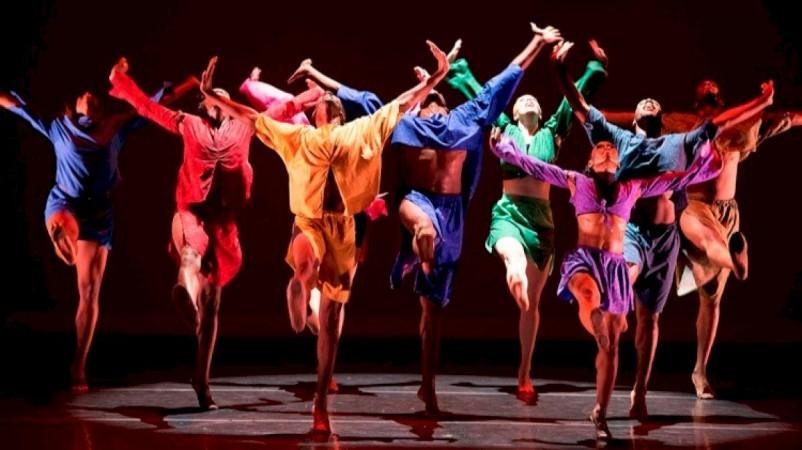
Popular Styles of Dance
Many different styles of dance forms exist in the world with its own unique way of performance along with its peculiar music, song, instruments, and dance steps.
From facial expressions to costumes to stage presence, each of these dance varieties stand differentiated from one another. A few among the popular styles in the world dance stage are contemporary, jazz, ballet dance, hip-hop, freestyle, classical, tap dance, tango, Viennese waltz, samba, paso doble, and many more.
On this year's World Dance Day, we would like to bring you the different traditional classical dance forms across our country:
Bharatnatyam (Tamil Nadu)
Staged by one performer, this popular dance form in South India involves transitional movements of the leg, hip, and arm along with the expressive eye movements, facial expressions, and hand gestures that are used to convey emotions. Mrinalini Sarabhai, Padma Subrahmanyam, Mallika Sarabhai are few renowned Bharatnatyam artists in the country.
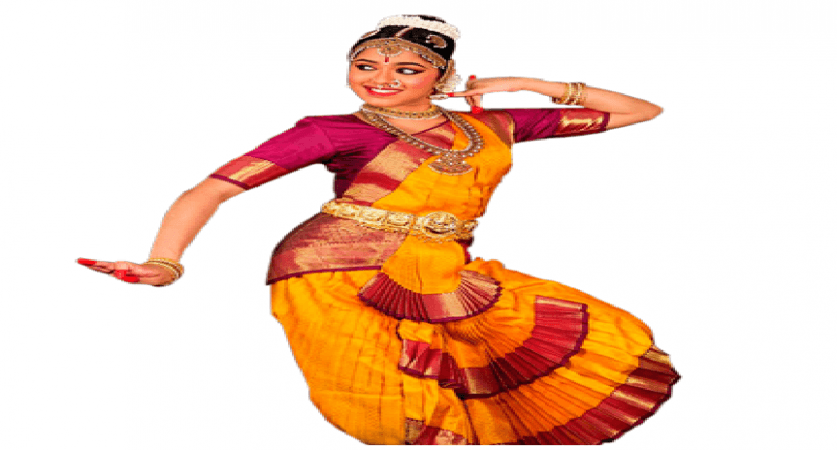
Mohiniyattam (Kerala)
Mohiniyattam or dance of Mohini (an incarnation of Lord Vishnu) is the classical solo dance form of Kerala. Adorned in beautiful white dressed embroidered with broad kasavu borders, the Mohiniyattam usually contains slow dance movements. Kathakali is another important theatre-dance form in Kerala. Kalamandalam Kalyanikutty Amma and Smitha Rajan are two exponents in this dance kind.

Yakshagana (Karnataka)
Although not a classical dance form, Yakshagana, like Kathakali is a major theatre form of Karnataka. Performed with massive headgears, elaborate facial make-up and vibrant costumes and ornaments, the Yakshagana, usually played by a troop of artists, is a temple art form depicting mythological stories and Puranas. Huttari, Suggi, Kunitha, Karga are the folk dance forms of the state.
Siddakatte Chennappa Shetty, Chittani Ramachandra Hegde, and Naranappa Uppoor are noted Yakshagana artists.
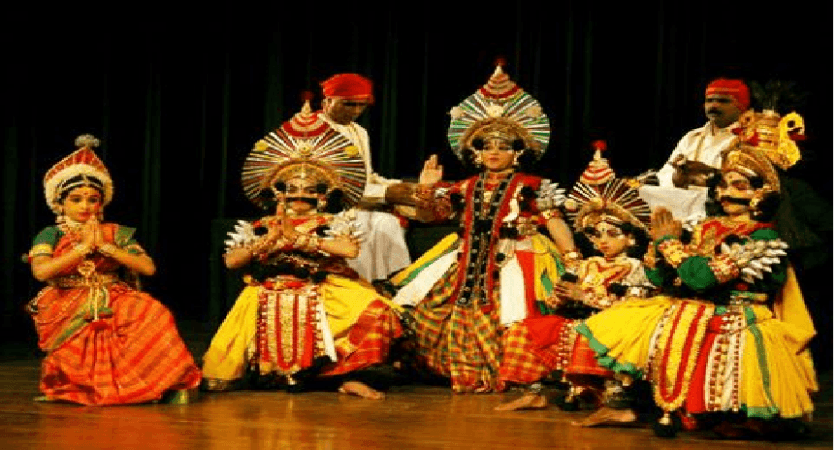
Kuchipudi (Andhra Pradesh)
Named after a village in the state, Kuchipudi has a very long tradition of dance-drama. It was known under the generic name of Yakshagaana. Costumes, ornaments, and jewelry, are similar to Bharatnatyam and occupies an important place. Sobha Naidu, Swapnasundari, Yamini Reddy are a few among the renowned dancers.
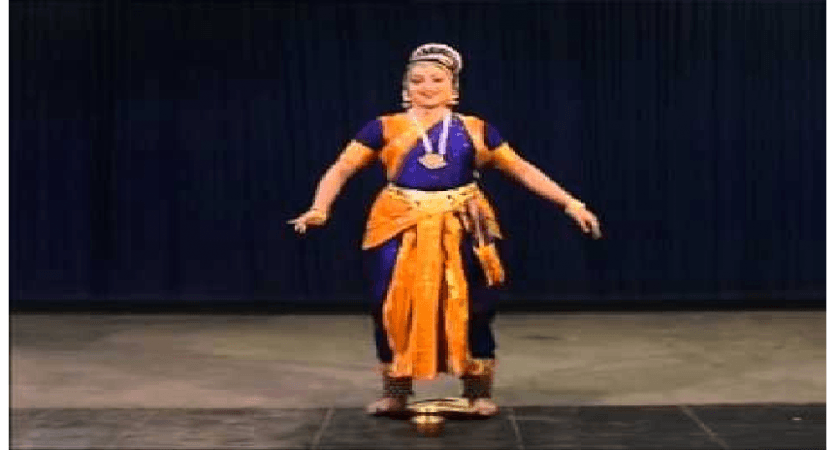
Kathak (North India)
A major dance form across Northern India, Kathak is characterized by swift movements of the solo artist, at times with a partner. The only dance form with the Hindustani music, a Kathak dancer works more on footwork; the movements skillfully controlled and performed straight-legged by wearing ankle-bells (ghungroo). Birju Maharaj and Gauri Shankar Devilal are well known Kathak maestros in the country.
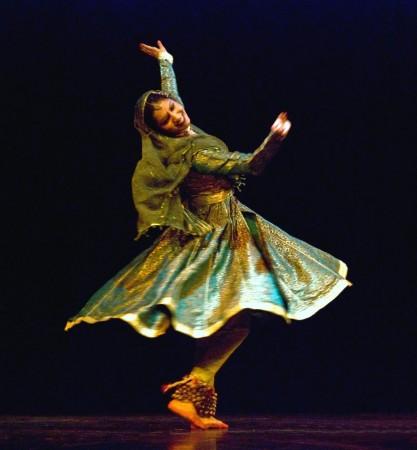
Odissi (Odisha)
The state dance form of Odisha, Odissi usually involves themes on incarnations of Lord Vishnu and verses of Jayadeva's Gita Govinda. A soft dance backed by soothing lyrics, Odissi hares similar mudras and expressions to Bharatanatyam, although the costumes and ornaments differ. Chhau is another popular dance form in the state. Sonal Mansingh, Gangadhar Pradhan, Chitra Krishnamurti are popular Odissi dancers.
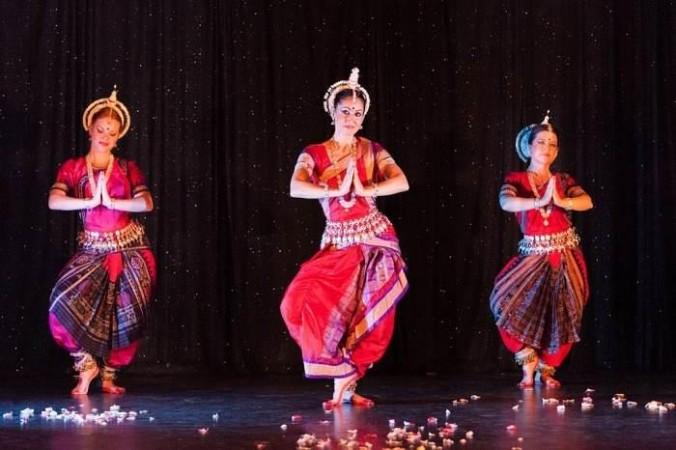
Sattriya (Assam)
Introduced in the 15th century A.D by the Vaishnava saint and reformer of Assam, Sankaradeva, Sattriya is regarded among the oldest forms of dances in India. The name arrives from the religious character and association with the Sattras (Vaishnava maths or monasteries). Ranjumoni and Rinjumoni Saikia are well known Sattriya artists.
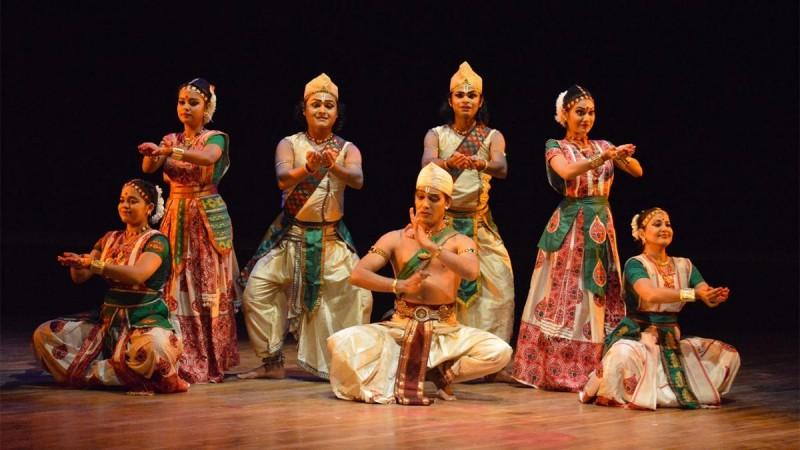
Manipuri (Manipur)
This dance in Manipur is associated with rituals and traditional festivals. It often takes references to the dances of Shiva and Parvati and other gods and goddesses involved in the creation of the universe. Unlike other dance forms, the Manipuri dancers do not wear ankle bells while performing. Guru Bipin Singha, the pioneer in the field is called the "Father of Manipuri Dance and style."
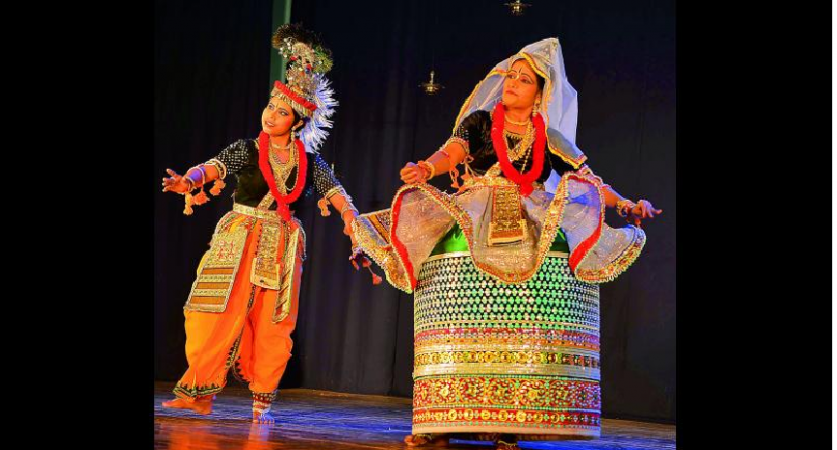
In addition to these classical dance forms, India has a rich heritage of folk dances and other theatre forms performed in front of temples and during other such rituals.

















